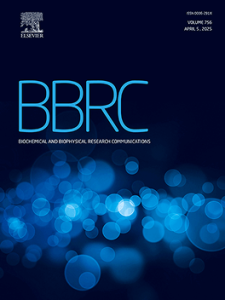

Structural basis of lactate dehydrogenase A-gossypol complex
Lactate dehydrogenase A (LDHA) is a key enzyme in Warburg’s effect, a characteristic of cancer cells. LDHA is a target of anticancer agents that inhibit the metabolism of cancer cells. Gossypol is a known cancer therapeutic agent that inhibits LDHA by competitive inhibition. However, the mechanisms of inhibition of LDHA by gossypol is unknown. Here, […]

Structural identification and comprehension of human ALDH1L1-Gossypol complex
The folate metabolism enzyme ALDH1L1 catalyzed 10-formyltetrahydrofolate to tetrahydrofolate and CO2. Non-small cell lung cancer cells (NSCLC) strongly express ALDH1L1. Gossypol binds to an allosteric site and disrupts the folate metabolism by preventing NADP+ binding. The Cryo-EM structures of tetrameric C-terminal aldehyde dehydrogenase human ALDH1L1 complex with gossypol were examined.
Modulation of innate immunity related genes resulting in prophylactic antimicrobial and antiviral properties
The innate immunity acts during the early phases of infection and its failure in response to a multilayer network of co-infections is cause of immune system dysregulation. Epidemiological SARS-CoV-2 infections data, show that Influenza Virus (FLU-A-B-C) and Respiratory Syncytial Virus (RSV ) are co-habiting those respiratory traits.

Targeting ATP2B1 impairs PI3K/Akt/FOXO signaling and reduces SARS-COV-2 infection and replication
ATP2B1 is a known regulator of calcium (Ca2+) cellular export and homeostasis. Diminished levels of intracellular Ca2+ content have been suggested to impair SARS-CoV-2 replication. Here, we demonstrate that a nontoxic caloxin-derivative compound (PI-7) reduces intracellular Ca2+ levels and impairs SARS-CoV-2 infection. Furthermore, a rare homozygous intronic variant of ATP2B1 is shown to be associated with the severity of COVID-19.

Long-chain polyphosphates impair SARS-CoV-2 infection and replication
Inorganic polyphosphates (polyPs) are linear polymers composed of repeated phosphate (PO43−) units linked to- gether by multiple high-energy phosphoanhydride bonds. In addition to being a source of energy, polyPs have cytoprotective and antiviral activities. Here, we investigated the antiviral activities of long-chain polyPs against severe acute respiratory syndrome coronavirus 2 (SARS-CoV-2) infection.


